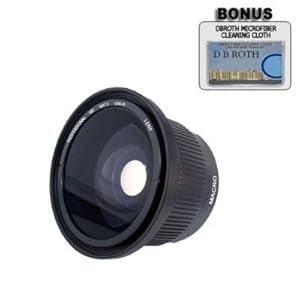
By Clive Anderson
Being an avid user and fan of the DSLR digital camera I realise that there are quite a few choices when it comes to low cost picture improvement. Wouldn't you agree that it is great to get that DSLR camera that you wanted, and even better once you have mastered the basic uses and functions that that camera has to offer? But what camera equipment choices do you think you should be making in order to take the next step in getting even better results from your efforts and camera.
I guess the first thing is being sure to get the camera that best suits you and your needs, which is not especially easy with so many digital camera manufacturers and each one having an extensive range to choose from.
The SLR (Single Lens Reflex) versions of digital camera, the DSLR have some truly outstanding capabilities even when standard, the picture quality when using the auto modes can make even the most basic of pictures appear as though they were taken by an expert.
So deciding on a DSLR digital camera makes more sense as it will give you far more options and choices for a multitude of options, as well as possibly the best results for your money.
Choosing the manufacturer and model for your DSLR requires a little research and weighing up all your personal requirements, not least of all the cost. The best place to get a great camera deal is not necessarily the high street store or mall, instead focus on the Internet.
Online stores have a lot less overheads and only have each other to compete with so searching for the right deal can take a bit of time, but by being smart you can find a site that has done all the legwork for you. Online deals offer great discounts, vouchers, and in a lot of cases you will even get free delivery.
Moving On...
There are so many accessories and extras that will catch your eye, one of which will no doubt be telephoto lenses for getting some great distance photographs that might otherwise be lost on a smaller lens.
Generally with a majority of DSLR cameras you should get something like 18-70mm or round about that so the first step up would be to go for a 200mm lens.
There are a variety of choices when it comes to lenses as well as in some cases a hefty price tag as well, but needless to say that the dearer ones are going to be better optical quality giving better clarity at distance.
There Is a Cheaper Option...
Alternatively for a much smaller price tag you can buy what is known as a 2x camera lens converter. (Before going any further I should like to make it clear at this point that the majority of converters only tend to work while using manual mode for focussing. That said the results can certainly be phenomenal and give the users two great ends of the scale).
Converters give you benefits of both worlds as they are ideal for close ups offering 2x the magnification that you previously had as well as great distance shots too.
This is something you would not necessarily get if you had bought a bigger lens as the lower ranges tend to be pretty high. For a 18-70mm lens you will now have 140mm top end, but for only a fraction of the cost of a 200mm lens.
This is a great comparison and for anyone starting out should give them all the need range wise for some time, but the inevitable will probably happen and the mindset will change to thinking of buying a 200mm camera lens or bigger and using the camera lens converter to make it a 400mm.
But That is a Different Scenario Again...
Whatever the thinking or decision when it comes to buying DSLR digital camera lenses and accessories a camera lens converter is always going to be a great buy due to it costing a lot less than a camera lens and can improve your close up photographs as well as your distance shots.
Now you know some of the benefits of owning and using a Digital Camera, wouldn't you like to see some at super low prices? The hard work of locating the best deals has already been done for you. So now you can check out the top makes and models and more at bargain prices by going to =>>> http://buycheapcameralens.blogspot.com/2012/06/how-to-choose-best-camera-lens.html
Article Source: http://EzineArticles.com/?expert=Clive_Anderson
http://EzineArticles.com/?Photography---Camera-Lens-Converters-Verses-Camera-Lenses&id=3038520

